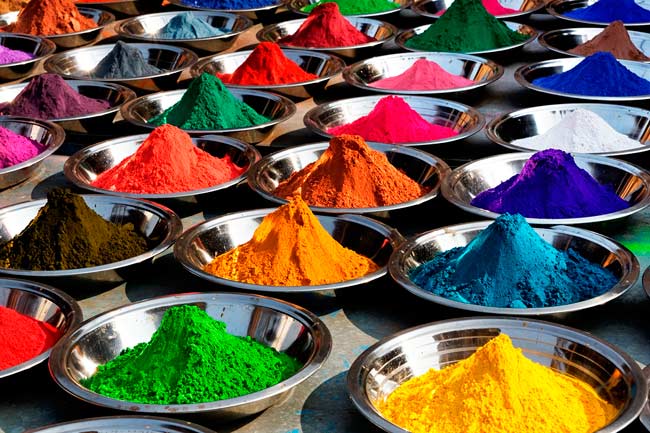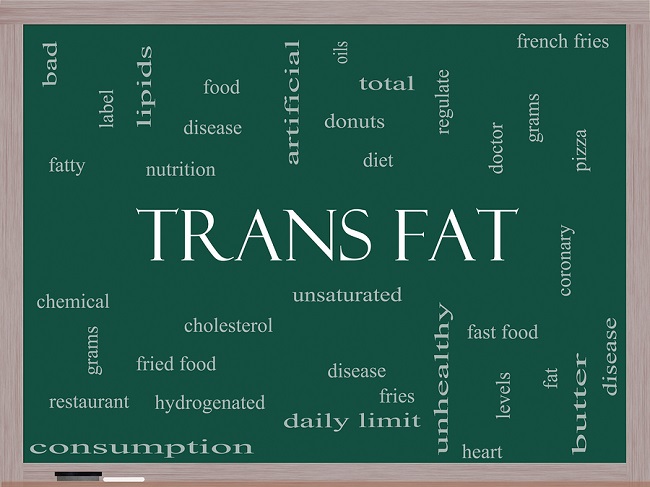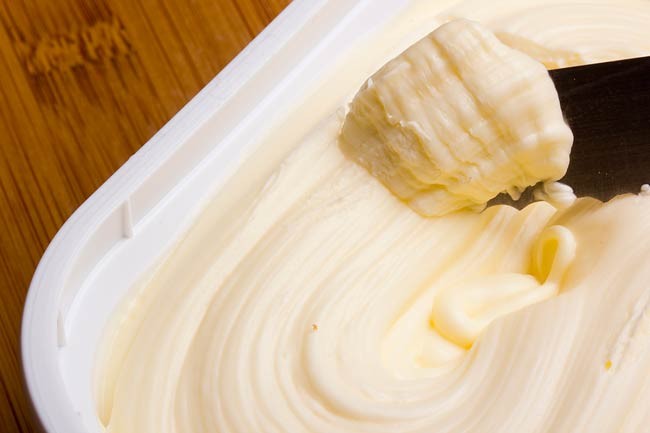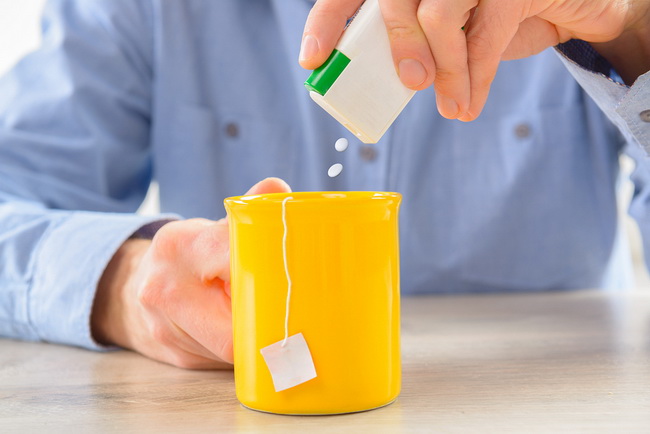- Make It Yourself Lavender Heart-Shaped Bath Bombs!
- 20 Things You Never Knew About “Down There”
- 12 Best Foods For Those Suffering From Arthritis Pain
- 12 Personal Hygiene Mistakes Almost Everyone Makes (Mom Never Told You About #4!)
- 15 Medicinal Plants And Herbs From The Cherokee People
- 12 Mind-Blowing Benefits Of Drinking Coconut Water During Pregnancy
- 12 Outstanding Winter Foods That Won’t Fatten You Up Like A Christmas Turkey
The Frightful 15: Food Additives That are Killing You

Photo credit: bigstock.com
You might try to kid yourself when you are eating those processed or junk foods and tell yourself that they aren’t all that bad, are they now?
In a simple sentence; yes, they are that bad.
Eating processed foods, junk foods, or fast foods is a virtual guarantee that you are consuming any number of toxic, carcinogens, or questionable food additives. There are more than 10,000 possible food additives that are allowed into the foods we consume, not counting the ones that are frequently added to the package itself.
Additives are used for various reasons; to stop fats or oils from going rancid, to stop fruit from browning, to “enrich” the food with synthetic vitamins, or to greatly slow down the spoiling rate. They can also be added to improve the flavor or texture, and especially the appearance.
Although almost all of these ingredients have been linked in numerous studies to health concerns or even shown to be downright dangerous, they are approved because these Big Food companies conduct their own research and they tell the FDA or the USDA that these additives are “Generally Recognized as Safe,” a.k.a. GRAS. The way it works is, if Big Food tells that FDA that this new additive they going to put in food is GRAS, then the FDA gives it immediate approval.
YOU MIGHT ALSO LIKE: FDA Admits it Allows Untested Food Additives to be Sold to Consumers
GRAS was intended for natural things that truly are safe, such as basil leaves or pepper or chamomile flowers, but for synthetic chemicals.
Now of course we can’t possibly list all 10,000 additives, but we are going to list the 15 worst offenders, the additives you should avoid at all costs. Most of these are already banned or have to contain warning labels in other countries, but not in the good old USA, so you are going to have to do some reading. If you see any of the items from this list on a food label, put it back on the shelf and choose something else. There are plenty of organic, more natural alternatives in this world if spend a few minutes and seek them out.
Keep reading for the frightful 15 food additives that have no business being in our food.
Continue to Page 2

Photo credit: bigstock.com
1. Potassium Bromate
Almost every single commercially made bread, hot dog bun, bagel, or hamburger bun contains this hormone interrupting chemical. If you see the word “enriched,” you will know that it contains potassium bromate. This chemical makes the bread more elastic so that it can stand up to the force of the bread hooks used in commercial production. There are a few companies who have looked at the facts and have started making their products without potassium bromate, such as Pepperidge Farm. If they can make breads and cakes without this chemical, why can’t everyone?
Potassium bromate has been linked in several studies to nervous system damage, thyroid issues, kidney damage, digestive problems, even cancer. Potassium bromate is listed as a possible carcinogen by the International Agency for Research on Cancer. How credible is this threat? Potassium bromate is banned in China, Canada, and the European Union.
2. Partially Hydrogenated Vegetable Oil
This is made by adding hydrogen to vegetable oils. Unfortunately, this process reduces good fats (polyunsaturated oils) and creates a dangerous type of fat called trans-fat. You will find trans-fat in many foods including some margarines, candies, cakes, cookies, baked goods, salad dressings, and almost all processed foods. The idea is to stop the fat from going rancid quickly; however, trans-fats are super unhealthy and are known to cause breast cancer, colon cancer, higher levels of cholesterol, and heart disease.
Continue to Page 3

Photo credit: bigstock
3. MSG (monosodium glutamate)
This chemical is used to “bring out the flavor” of foods, but the reason many companies use it is that the can reduce the amount of “real” foods in their products if they add enough MSG (which is very inexpensive) to make up the difference for lost flavor. Since its introduction in 1960, MSG has been a major concern to the public, but the FDA doesn’t seem to care. One study showed the when infant mice were fed MSG; it destroyed the nerve cells in their brains. Public outcry after this study did cause companies to stop adding it to infant formula and baby food, but MSG is still commonly used in almost everything else including: gum, drinks, prescription drugs, low fat milk, and sometimes even IV fluids.
A great many people are sensitive to MSG, and children especially are more susceptible. Neonatal exposure to MSG can cause a reduction of growth hormones, which can lead to stunted or slow growth and obesity problems. The most common complaints about MSG include headaches, difficulty breathing, nausea, weakness, a burning sensation, especially in the forearms or the back of the neck, and changes in heart rate.
4. Nitrates and Nitrites
These are synthetic preservatives that are often added to meats to make them look nice and pink, so that the consumer will think they look “fresher.” (Find out more disgusting things added to meat). The problem is that nitrates, combined with high heat, form a substance called nitrosamines, which are known carcinogens. Nitrosamines wreak havoc on a cellular level and have been linked to colon, stomach, pancreas, and bladder cancer. Although nitrates can be naturally found in some vegetables, it’s the synthetic type that is applied to meat, and then activated by heat, that is the dangerous culprits.
5. Aluminum
You might wonder why exactly aluminum is being added to your food. The answer: it’s a stabilizer, so that food does not get too soft, too hard, or fall apart. There are numerous types of aluminum added to your foods including sodium aluminum phosphate and sodium aluminum sulfate, just to name two of the most popular kinds. Aluminum accumulates in the body and tends to settle in the brain and bones. Aluminum can cause neurological problems including slow motor response, learning problems and behavior issues. There have been several studies linking Alzheimer’s disease and other neurological problems to an accumulation of aluminum. Avoid any product that lists aluminum in its list of ingredients and never cook with aluminum pots and pans. Read more about aluminum dangers.
Continue to Page 4

Photo credit: bigstock.com
6. Theobromine
This is an alkaloid that is frequently added to chocolate and the reason why chocolate can be toxic to dogs. It acts very much like caffeine. This additive is often found in cereal, bread, and sports drinks, to name a few. One study performed in Utah that was done between the years of 1983 and 1986, but not published until 1993, showed that this substance caused an increased risk of prostate cancer in men and a link to testicular cancer was shown in another study.
7. Propyl Gallate
This chemical is used to stop fats and oils from going rancid. You will find this in many foods that contain edible fats such as frozen pizza or sausage. Propyl gallate is linked to a greater risk of developing tumors in the body, including rare brain tumors, according to the National Toxicology Program. The European Food Safety Authority decided that the studies that have been done in the US to prove its safety are outdated and/or are poorly written. There is also incomplete data as to whether or not this chemical is a hormone disruptor or whether it has estrogenic compounds.
8. BHT (butylated hydroxytoluene)
BHT and BHA (which will be discussed in the next point) are two preservatives that are often used in combination. BHT is not a carcinogen; however, in animal studies it has been linked to the development of tumors, as well as negative thyroid changes. BHT appears to be an endocrine disrupting chemical and is banned in most other countries, along with BHA, but the FDA gives it GRAS status anyway.
Continue to Page 5

Photo credit: bigstock.com
9. BHA (butylated hydroxyanisole)
Like BHT, this is a preservative, but it is far more dangerous than its cousin BHT. BHA has negative effects on the neurological system, alters behavior, and is a possible carcinogen. This preservative is found in numerous items including breakfast cereal, popcorn, potato and corn chips, gum, margarines, dehydrated potatoes, and beer. BHA is known to cause cancer in studies done with rats and might cause cancer in humans. The US Department of Health and Human Services made a report in 2011 from their National toxicology Program and in this study they reported that BHA should be reasonable anticipated to be a human carcinogen. The International Cancer Agency also lists this preservative as a possible carcinogen. In California, this is listed as a known carcinogen and must include warning labels on foods sold in that state. BHA is banned in Japan and the European Union. It is banned in infant foods in the UK and must be listed on other types of foods. Why is this obviously dangerous chemical still allowed in foods sold in America?
SEE ALSO: Big Food Sells the Same Products in Other Countries – Minus the Chemicals
10. Natural and Artificial Flavors
You might wonder why “natural” flavors are included in this list. Actually, what we should be asking is what exactly a “natural” flavor is? Dirt is a natural flavor but not too many people are interested in eating that, are they?
Most people assume natural flavor means something like strawberry or garlic flavoring. Unfortunately, this isn’t the case. “Natural” flavors are something they make in a lab, made in the same manner as artificial flavors. The only difference here is that natural flavors must come from a natural source. This means that “natural” flavors must start off with some essential oil, extract or even just a bit of plant material, vegetable juice, or even edible yeast. That’s the only difference. They start off with a bit of the natural element, and then create flavors from that bit of natural plant or spice. Natural flavors have very little in common with the natural product from where they once started; In fact, natural flavors are almost identical to the synthetic ones. Many “natural’ flavors contain BHA, solvents, or propylene glycol, more commonly known as antifreeze. Unless your food states that is has CERTIFIED natural flavor, it’s mostly synthetic chemicals. Studies done involving rat show that all synthetic flavors cause various types of cancer.
Continue to Page 6

Photo credit: bigstock.com
11. Artificial Colors
Artificial colors are synthetic colors that are not found in nature. Most are a derivative of coal tar and can contain lead and/or arsenic (up to 10 PPM) and still be considered safe by the FDA. These are known to cause allergic reactions, headaches, ADD in children, and are linked to nerve damage. These are just a few of the common colors used:
- Blue #1 and #2 – Found in candy, drinks, pet food, or baked goods. These have been shown to cause damage to chromosomes, cause uncontrolled cell mutation (which is a precursor to cancer), are strongly linked to brain tumors, and serious problems such as refractory hypotension, and even death.
- Citrus Red #1 and #2 – These are sometimes sprayed on oranges to make them look more ripe. Red #1 has been linked to in so many studies that it fractures the chromosomes and can lead to cancer that the even the lax FDA is seriously considering a ban on red #1. Citrus red #2 has been linked to cancer as well.
- Green #3 – Not as common as red and blue, but green #3 has been linked to tumors in the bladder.
- Red #3 and #40 – Red #3 is often found in red fruit processed foods such as cherry pies or maraschino cherries. It has been linked to thyroid cancer and nerve damage. Red #40 is very common and can be found in candy, soda, pet food, and sausage, to name a few. This dye is a suspected carcinogen.
- Yellow #5 and #6 – Yellow #5 is perhaps the most popular dye. It can be found in gelatin, soda, pastry and pet food. It’s a suspected carcinogen and has been known to cause serious allergic reactions. #6 is found in many of the same foods as #5 and it has been strongly linked to tumors in the kidneys and adrenal glands.
12. Diacetyl
This is most commonly found in the “butter” flavoring of frozen foods and microwave popcorn. It can also be used to flavor yogurt and cheese. Diacetyl has been linked to neurological problems, including the development of Alzheimer’s disease. Diacetyl has also been linked to respiratory damage, including permanent scarring of the airways, in studies done with those working at factories that produce microwave popcorn.
13. Phosphates
These are used to improve the moisture retention in foods so that they don’t dry out, and to reduce acid levels, Phosphates are in so many processed foods it’s hard to list them all, but some of the most common foods are baked goods, processed meats, and fast foods. These chemicals have been linked to heart disease.
Continue to Page 7

Photo credit: bigstock.com
14. Artificial Sweeteners
The most common artificial sweetener, of course, is aspartame. This sweetener starts out its life as the excrement (yes, we are talking about poop) of a GMO bacteria. There are plenty of other artificial sweeteners on the market including ones like saccharin, sucralose, and tagatose. All artificial sweeteners have side effects and when they breakdown in the body, the results can be toxic. All of these artificial sweeteners have been linked to various health problems including brain tumors, epilepsy, headaches, depression, hallucinations, and weight gain. The FDA has registered thousands of complaints about these dangerous sweeteners, but they insist that these chemicals are GRAS.
15. Brominated Vegetable Oil
This chemical is used to keep the flavoring in certain drinks, especially soft drinks, from separating. Bromate, the main ingredient in this mixture, is a known poison. Just 2 ounces of a 2 percent solution of Bromate can kill a child. BVO leads to allergic reactions because it depletes histamine in the body and reduces the immune response. This chemical poison has been linked in studies to birth defects, growth problems, and major organ damage. Even the FDA says that they are considering pulling BVO from the market because of health concerns, but, as of this writing, they are still sitting on any plans to take action. Worst of all? Food companies are not required to list BVO on their labels. This is yet another good reason to avoid all sodas entirely.
The best advice we can give you is that if any food label has more than 5 or 6 ingredients, it probably contains things you don’t want in your body. Avoid processed foods as much as humanly possible and cook from scratch to safeguard your family’s health.
References:

































Rosemarie Bass
Apr 22, 2015 at 1:57 pm
There is a chemical that has just begun to show up in whole ground corn products: fumaric acid. It is replacing natural lime in corn tortillas etc. When I looked it up it was said to be “practically non-toxic”. What???? It either is toxic or is non-toxic. I guess because it will only kill fish instantly and gradually destroys human kidneys it is practically non-toxic as we can live without functioning kidneys dialysis is a great option, right? The chemicals listed in this article, I have already eliminated the hard way; trial and error as I have become so sensitized that the smallest amounts that the tiniest amounts produce poisoning symptoms. Swelling in the extremities, joint and back pain and nasty oozing skin/scalp sores which doctors have told me, I was doing to myself by scratching. Please add fumaric acid to this list ASAP!!! No one should live in utter misery as I have for years. Can you say chronic fatigue syndrome or fibromyalgia because that is what they diagnose food additive poisoning as claiming not to know causes those ” mysterious ” ailments.